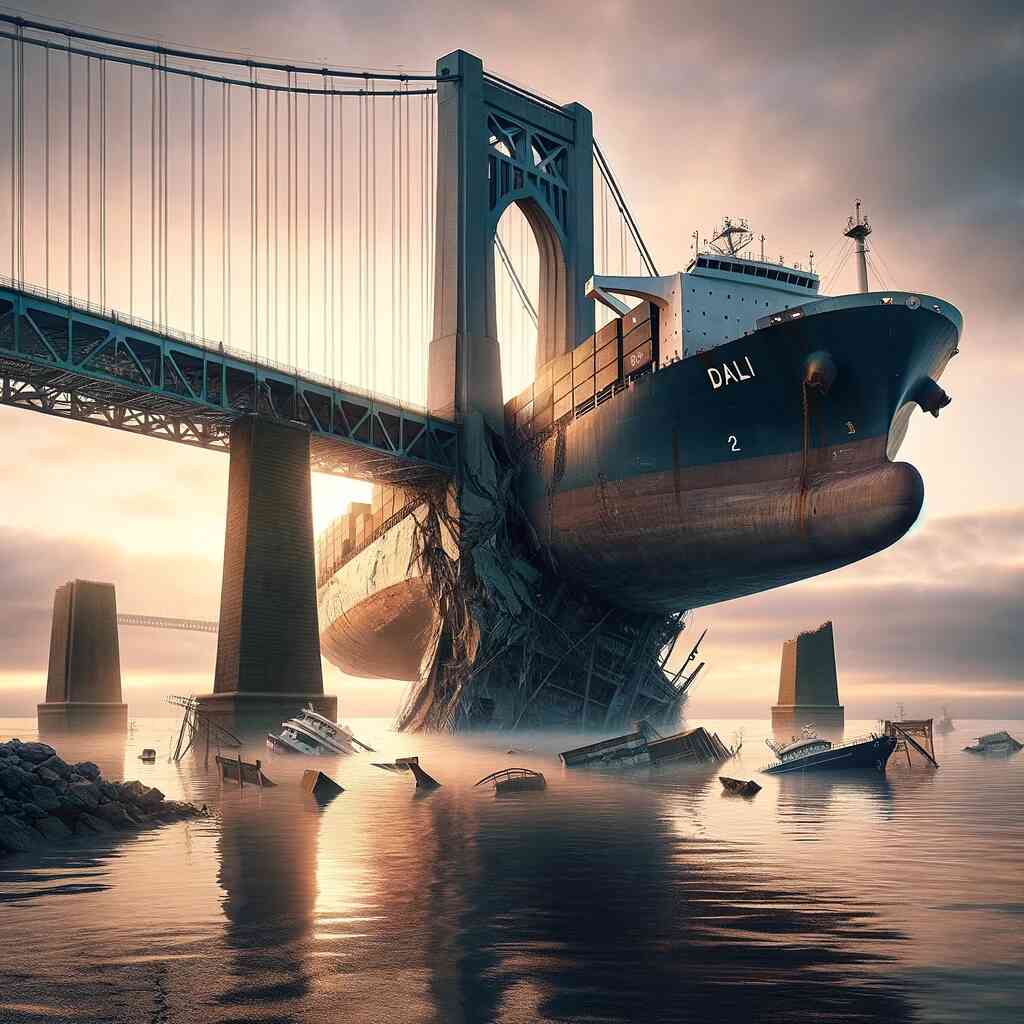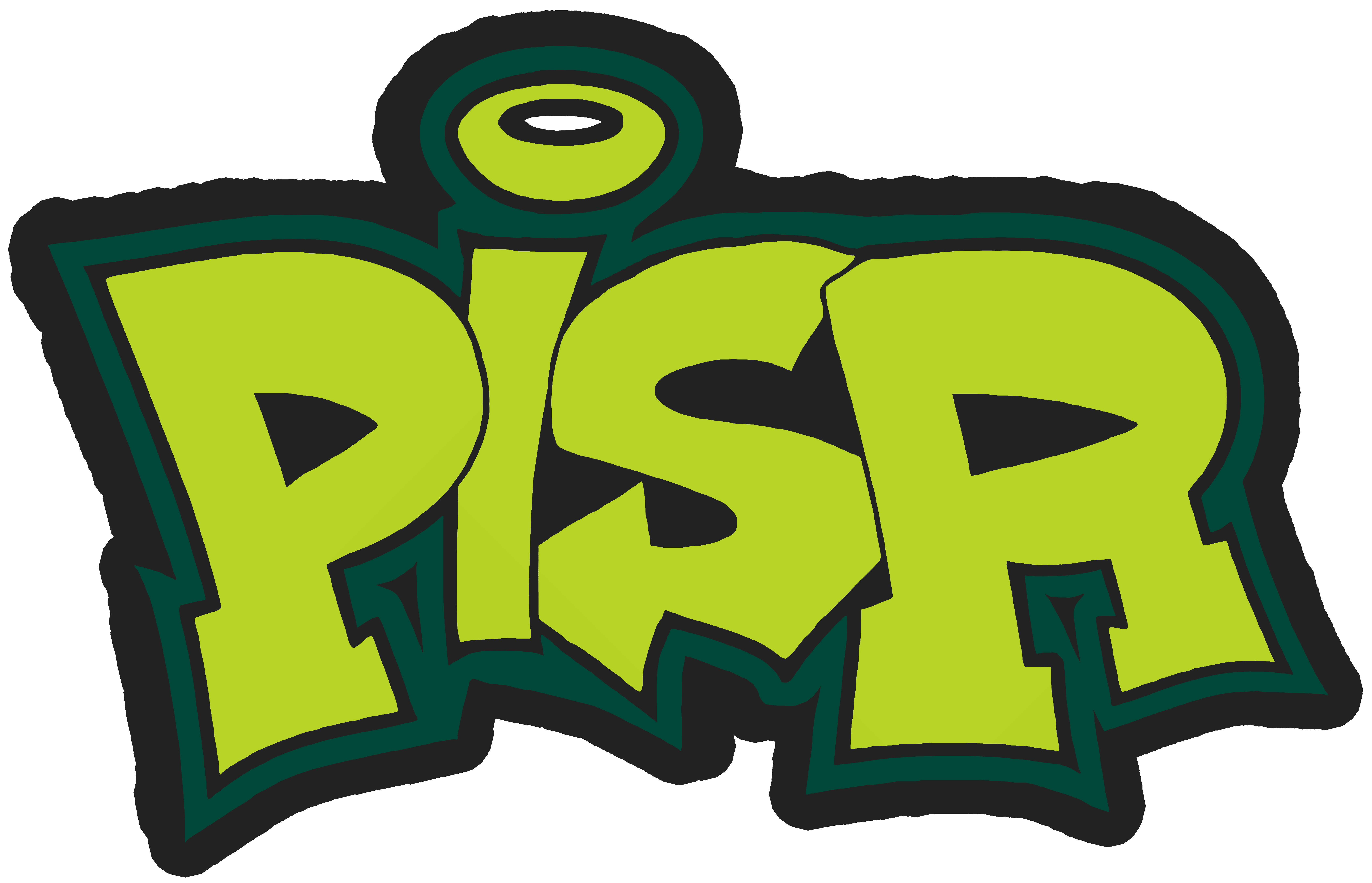Bridge Over Troubled Water: Maryland’s Nautical Nightmare

Bridge Over Troubled Water: Maryland’s Nautical Nightmare
In the early hours of Tuesday morning, Maryland’s iconic Francis Scott Key Bridge found itself in a precarious situation when a colossal cargo ship, seemingly with a vendetta against infrastructure, rammed into one of its support columns. The bridge, known for its picturesque views and not its ability to withstand maritime assault, succumbed to the impact, sending a portion of it, along with vehicles and construction workers, into the watery depths below, like a house of cards in a hurricane.
The cargo ship, named the Dali, perhaps in a tribute to the surrealism of the situation, had just bid adieu to the Port of Baltimore when it lost propulsion and, apparently, all sense of direction. The vessel, moving at a brisk 8 knots, became an unwitting battering ram, turning the bridge into a scene reminiscent of a disaster movie, like a bull in a china shop on steroids.
The sound of the collision was so monumental that residents thought it was an earthquake. “It felt like my house was falling,” one witness exclaimed, clearly not having signed up for a live-action rendition of ‘Bridge on the River Kwai.’
Authorities sprang into action, declaring a state of emergency and launching a search and rescue operation for the missing construction workers who, up until that moment, were probably just contemplating their lunch options, like a chef pondering the perfect spice for a stew.
The Baltimore Harbor, a major thoroughfare not just for Maryland but for the entire East Coast’s shipping network, now faces a potential economic crisis. The closure of the bridge and the suspension of shipping traffic could have far-reaching effects, potentially causing delays and financial losses across various industries, like a domino effect in a game of cosmic proportions.
In response to the crisis, President Biden has vowed a complete rebuild of the bridge as soon as possible to save jobs and restore the vital transportation link, like a knight in shining armor galloping to the rescue of a distressed damsel.
In an unexpected twist, the political right has concocted a medley of conspiracy theories, pointing fingers at Transportation Secretary Pete Buttigieg, DEI programs, and even COVID-19 as the sinister forces behind the disaster, like a witch hunt in modern-day Salem.
Adding fuel to the fire, some voices on the right are using this disaster as a platform to attack diversity hiring and affirmative action, claiming that the bridge’s collapse is a direct result of less qualified individuals being employed due to these policies, like a scapegoat in an ancient ritual of blame.
This argument conveniently overlooks the fact that the Maryland Transit Authority and the crew of the Dali demonstrated quick emergency skills that saved countless lives, like a phoenix rising from the ashes of adversity.
As the debate unfolds, the incident serves as a stark reminder of the fragility of our infrastructure and the need for proactive measures to ensure its resilience, like a lighthouse guiding ships through stormy seas. Whether the focus is on economic recovery, job preservation, national security, or maintaining a diverse and skilled workforce, the collapse of the Francis Scott Key Bridge has thrust these issues into the spotlight, challenging policymakers to navigate the troubled waters of infrastructure, economic policy, and social justice, like sailors charting a course through uncharted waters.

Responses